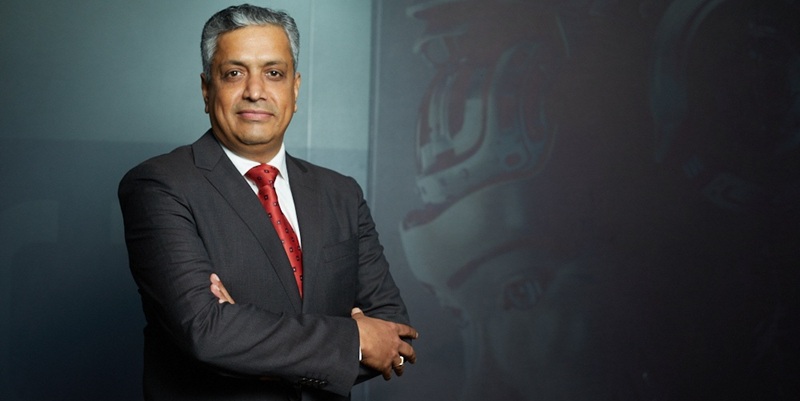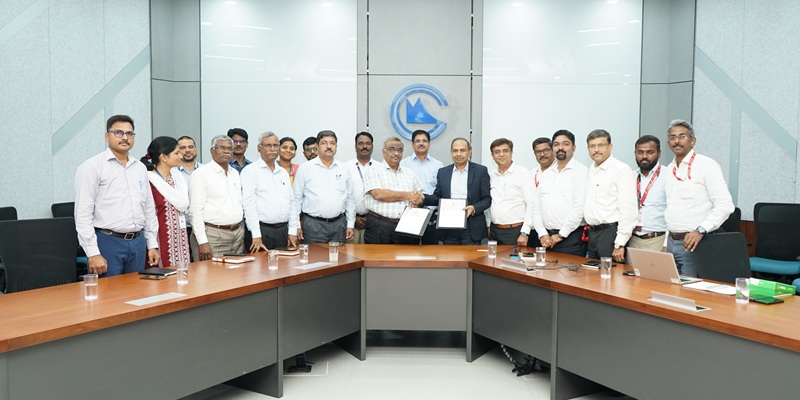Schedule a Call Back
Trends in the Welding Industry
 Technical Articles
Technical Articles- Mar 12,14
Welding is widely used in industry as a permanent method of joining materials. The advent of new materials with the need for faster production with the highest quality requirements is the mission for manufacturers and users of welding equipment and consumables.
Training and certification of welding personnel is of prime importance to assure that the highest standards are achieved .In India, at the large companies, there is awareness of the technological requirements of welding and these companies have a separate welding engineering division to ensure the standards required as per international codes and conventions are met . In smaller and medium companies, there is very little awareness of welding processes and technology to counter which the need or training and certification is a must .increasingly there is awareness among owners and management in Indian companies for compliance with international standards. Many Indian fabricators have been audited and certified by ASME and API as compliant with their standards.

In India, formal training for the welder is a one year course conducted by the ITI. A further one year apprenticeship is conducted by large companies on completion of which the worker is examined and certified ( NCTVT ) and hence considered to be a highly skilled personnel . The need of the hour is to train and certify the welders to international standards such as ASME section IX, ISO (EN), API, etc. A beginning has been made by the IIW (India) who are conducting welder certification programmes on a large scale. IIW also conducts training and certification programmes for welding engineering personnel.
To maintain quality it is also imperative that the inspection personnel have the up to date theoretical knowledge and practical skills. Training and certification programmes for welding inspection are conducted by AWS (American Welding Society), TWI (The Welding Institute), and API (American Petroleum Institute) with recertification being a requirement every three or five years to ensure that knowledge is up to date. ASNT (American Society of Non Destructive Testing) and TWI also train and certify non destructive testing personnel in the various methods of NDT to ensure high standards of testing and inspection of materials and weld joints. Here also recertification being a requirement every five years to ensure that knowledge is up to date. Welding exerts a profound influence on the cost of fabrication and quality of the product. It is important, therefore, to ensure that welding is carried out in the most effective way and that appropriate control is exercised over all aspects of the operation.
Within the EN 29000 series of standards for quality systems, welding is to be treated as a 'Special Process' since welds cannot be fully verified by subsequent inspection and testing of the product to ensure that the required quality standards have been met.
"Quality cannot be inspected into a product; it has to be built into it. Even the most extensive and sophisticated non-destructive testing does not improve the quality of welds. Supervision needs to be implemented to ensure that the specified quality will be achieved."
The Following Trends are Very Clear:
 Where Human Resources are concerned getting trained and certified welders is getting increasingly difficult. Welding is considered a blue collar job and that too physically testing. The growing economy and need for increase in production with highest quality has therefore increased the needs for automation of welding processes to offset the requirement of skilled welders
Where Human Resources are concerned getting trained and certified welders is getting increasingly difficult. Welding is considered a blue collar job and that too physically testing. The growing economy and need for increase in production with highest quality has therefore increased the needs for automation of welding processes to offset the requirement of skilled welders
- There will be continuing need to reduce manufacturing costs and to improve productivity, since (a) wage rates for the people in manufacturing industries will continue to increase, (b) the cost of metals for producing weldments and filler metals will also continue to be more expensive, and (c) energy and fuel costs will increase
- There will be a continuing trend towards the use of stainless steel and duplex steels and higher-strength materials
- There will be more use of welding by manufacturing industries
- New materials and better designs will need higher levels of reliability and higher-quality requirements, and
- The need for automatic welding and automation in welding will increase.
Requirements for Welding Automation
Welding processes are many and varied but in this article the discussion will be limited to the arc processes as they are the most popular in industry.
Operator factor is the amount of actual welding time or Arc time. This is a measure of productivity in welding. Manual welding has the lowest productivity with semiautomatic welding approximately double and machine welding the next highest, with automatic welding approaching 100%. For increased productivity the expected trend will be away from manual welding towards semiautomatic welding and to machine or automatic welding when possible. Filler metal efficiency and arc time results in the total deposit of weld metal to produce a given weldment. If the amount of weld metal can be reduced to make a weld it is an economic savings, thus there is an advantage to methods such as narrow gap welding. Narrow gap welding is reported to result in a saving of 35 to 40 % in consumable cost and time.
Welding Process Development
The manual metal arc welding process the oldest of the current arc welding processes in the near future may represent only a third of arc welding.
ESSC with high speed fluxes is increasingly being used for the strip cladding processes. Deposition rates of ESSC with high speed fluxes are in the range of 350 mm/min as compared to 180 to 200 mm/min with normal fluxes. It also has a better deposition control resulting in a 20 to 30 % savings in consumable cost. Use of Electroslag welding and submerged arc welding will increase in the future.
MIG welding is being substituted for shielded metal arc, gas welding, brazing, and resistance welding. This is a continuous wire process with high filler metal utilization and will be increasingly used in industry at the highest rate. FCAW welding has a lower filler metal utilization and higher filler metal cost so may not have the appeal of MIG welding. In many cases though FCAW is the best option for example welding in windy and open areas. Nowadays many wires have been developed for example Stellite 6 equivalent and Tungsten carbide increasing the versatility of this process. Difficult to access hardfacing jobs can now be easily completed.
TIG welding is highly automation friendly. It is used on high quality work and very popular process. Micro TIG is used for welding newer thin speciality metals. Plasma arc welding has many advantages over TIG welding such as increased penetration, smaller HAZ, less distortion, faster speed, reduced consumable cost. Plasma arc welding is highly automation friendly and will increasingly replace TIG in automated welding. Plasma welding is adaptable for powder as well as wire feed. PTA (powder plasma) welding is increasingly being used for hardfacing and reclamation applications.
Standard welding automation products like rotators, positioners, manipulators will increasingly be used. The demand for torch height controllers, seam trackers, cameras and monitors will also increase with the need for automation. Continuous NDT inspection methods and equipment are also increasingly being used in industry to monitor the weldments being produced in the automated equipment.
Specialised fixtures and automation as per the job requirements will be popular. CNC controlled systems are already being made with retrievable programmes for automatic welding and hardfacing applications.
References
- Current trends in welding processes and materials: improve in effectiveness - P. Kah and J. Martikainen
- New trends in welding in the aeronautic industry - Patricio F. Mendez
Filler Metal Efficiency
| Welding Process | Filler Material Deposition |
| Cold wire type processes, Gas tungsten arc and Plasma arc | 100% |
| Submerged arc welding (when the electrode only is considered) | 100% |
| Gas metal arc welding | 95% |
| Flux-cored welding | 80% |
| Covered electrodes | 65% |
Related Products

Heat Exchanger Scale Removal Compound -hesr-300


Universal Tapping Machine -model Tr-10/15
Tapping
Machine Tools offers universal tapping machine -model TR-10/15.
Hi There!
Now get regular updates from IPF Magazine on WhatsApp!
Click on link below, message us with a simple hi, and SAVE our number
You will have subscribed to our Industrial News on Whatsapp! Enjoy














